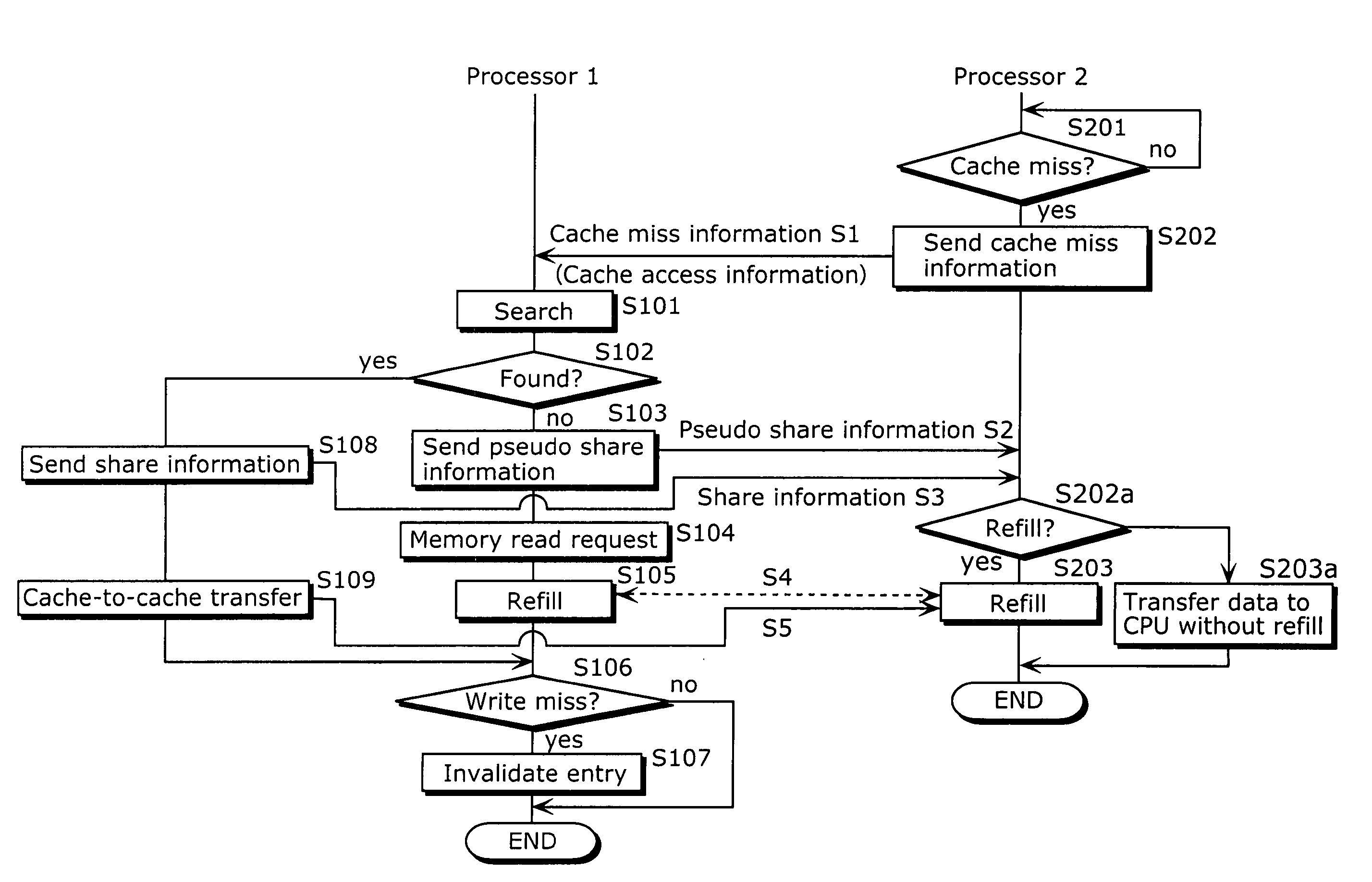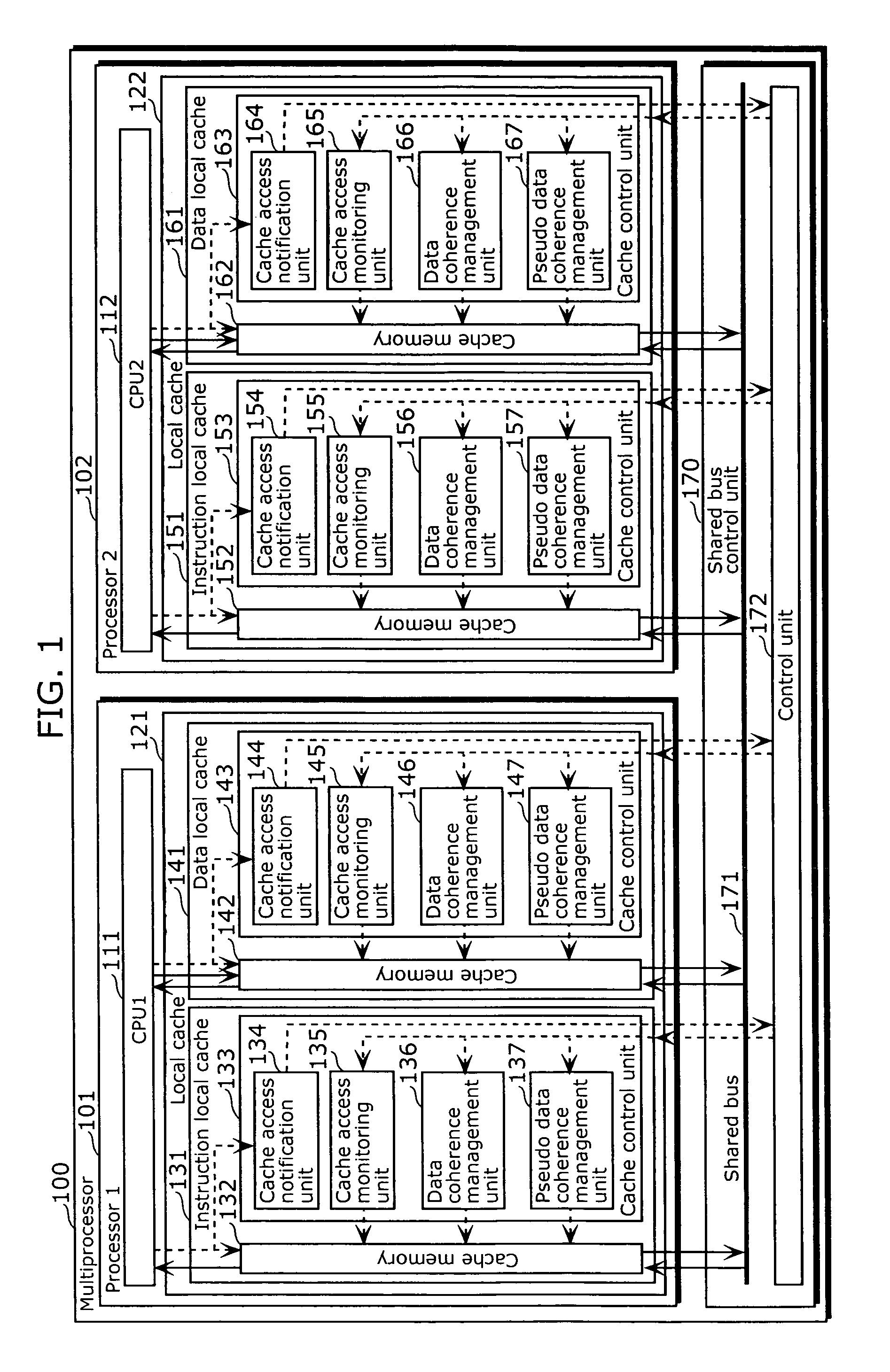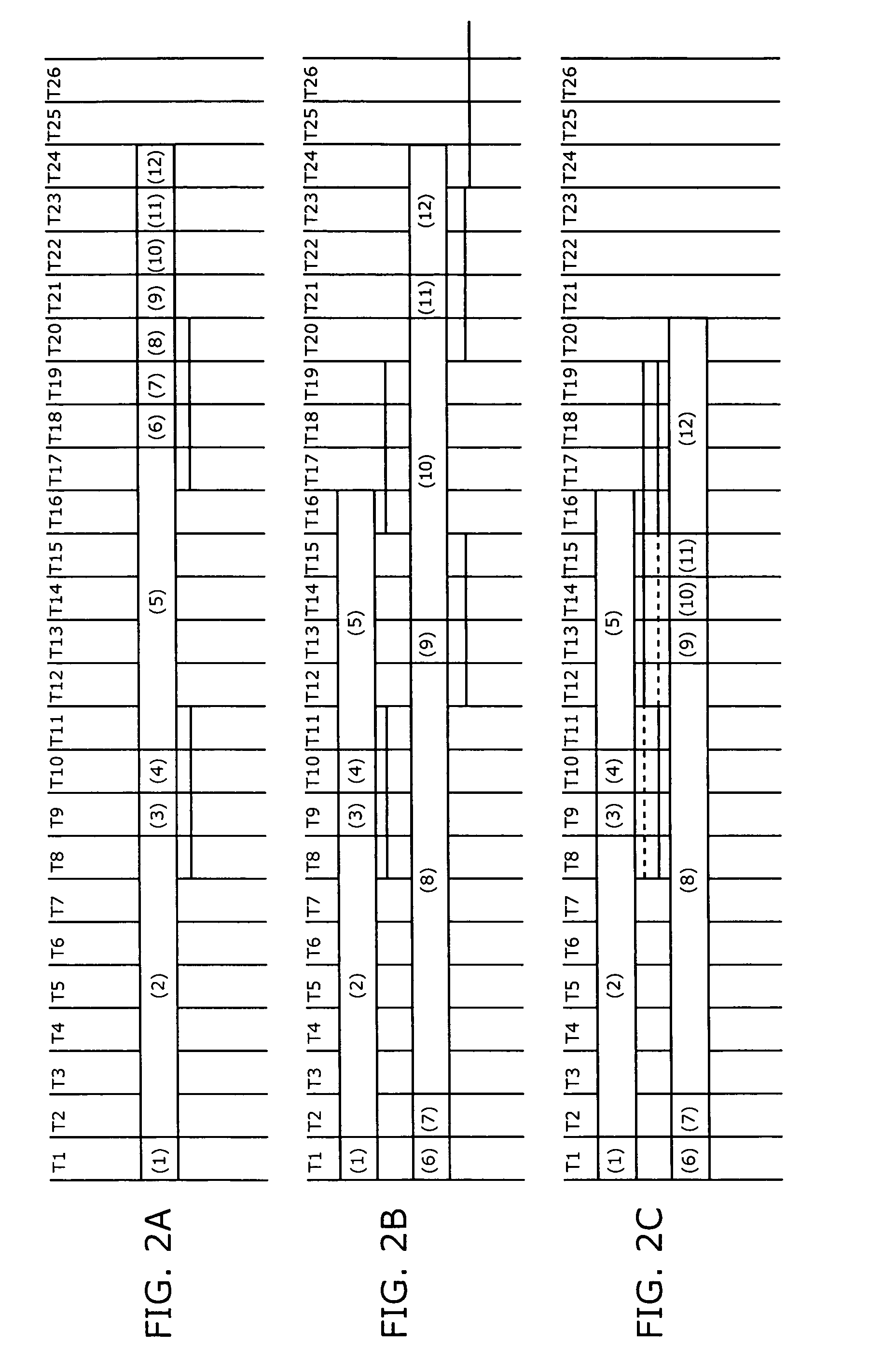Multiprocessing apparatus having reduced cache miss occurrences
a multi-processing apparatus and cache technology, applied in the field of multi-processing apparatus, can solve the problems of unnecessary data stored in the cache, cache hit, and the average multi-processor snoopy cache system is considered inferior to the uniprocessor cache system in terms of local characteristics, so as to reduce the cache miss occurrence ratio of the respective local cache and reduce the contention of shared bus
- Summary
- Abstract
- Description
- Claims
- Application Information
AI Technical Summary
Benefits of technology
Problems solved by technology
Method used
Image
Examples
first embodiment
[0077]Referring to FIG. 1, FIGS. 2A to 2C, FIG. 13, and FIG. 15A, a preferred embodiment of the multiprocessor is described.
[0078]FIG. 1 is a functional block diagram showing the multiprocessor according to the present embodiment. FIG. 1 depicts a multiprocessor 100 in which two processors are connected to a shared bus control unit that is made up of a shared bus and a control unit thereof. Processors 101 and 102 include CPUs 111 and 112 as well as local caches 121 and 122, respectively. The local caches 121 and 122 include instruction local caches 131 and 151 as well as data local caches 141 and 161, respectively. The instruction local caches 131 and 151 as well as the data local caches 141 and 161 include cache memories 132, 142, 152, and 162 as well as cache control units 133, 143, 153, and 163 thereof, respectively. The cache control units 133, 143, 153, and 163 include the following units, respectively: data coherence management units 136, 146, 156, and 166 that (i) manage tran...
second embodiment
[0141]However, in the case where the operations of the above-described pseudo data coherence management units are kept enabled at all times, while it is possible to prevent the decrease in cache locality, it is considered that there occurs a problem related to the reduction in cache capacity since the rate of data sharing increases. In view of this, referring to FIG. 3, FIG. 4, and FIG. 15B showing a program 2, a description is given of a multiprocessor that does not make an unnecessary shared use of cache capacity as compared with the first embodiment.
[0142]FIG. 3 is a functional block diagram showing the multiprocessor according to the present embodiment. In the multiprocessor of the present embodiment, CPUs 311 and 312 further include first pseudo data coherence management request units 381 and 382, respectively, in addition to the constituent elements of the multiprocessor shown in FIG. 1. The first pseudo data coherence management request units 381 and 382 are connected to the ...
third embodiment
[0161]However, the addition of instruction codes results in a problem of compatibility and the like since such addition is equivalent to changing of the architecture. In view of this, referring to FIG. 3, FIG. 5, and FIG. 15A showing the program 1, a description is given of a multiprocessor that reduces a wasteful use of cache capacity (shared use of unnecessary data) without adding any special set of instructions, as compared with the second embodiment.
[0162]FIG. 5 is a diagram showing the structure of each of the first pseudo data coherence management request units 381 and 382 shown in FIG. 3. FIG. 5 depicts functional blocks related to each of the first pseudo data coherence management request units 381 and 382 in the respective CPUs 311 and 312 shown in FIG. 3. Each CPU 500 includes: a load / store access address generation unit 501 that generates a load / store access address 502 when a load / store access is performed; a processor status storage unit 510 that indicates a status of t...
PUM
 Login to View More
Login to View More Abstract
Description
Claims
Application Information
 Login to View More
Login to View More - R&D
- Intellectual Property
- Life Sciences
- Materials
- Tech Scout
- Unparalleled Data Quality
- Higher Quality Content
- 60% Fewer Hallucinations
Browse by: Latest US Patents, China's latest patents, Technical Efficacy Thesaurus, Application Domain, Technology Topic, Popular Technical Reports.
© 2025 PatSnap. All rights reserved.Legal|Privacy policy|Modern Slavery Act Transparency Statement|Sitemap|About US| Contact US: help@patsnap.com



